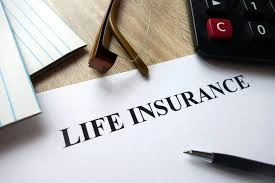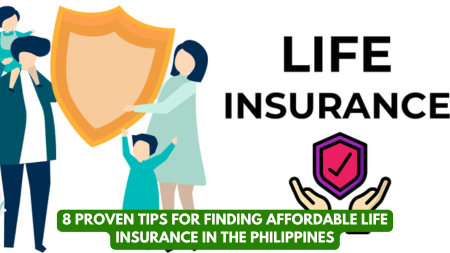No products in the cart.
Financial
8 Proven Tips for Finding Affordable Life Insurance in the Philippines
8 Proven Tips for Finding Affordable Life Insurance in the Philippines

Life insurance is a cornerstone of financial peace in the Philippines—a shield for your family against life’s uncertainties. But with premiums that can stretch tight budgets, many Filipinos hesitate, fearing it’s a luxury they can’t afford. The good news? Affordable life insurance isn’t a myth—it’s within reach if you know where to look and how to shop smart.
In this ultimate guide, we reveal 8 proven tips to secure cost-effective life insurance without compromising coverage. Spanning five in-depth chapters—each packed with over 1,000 words of actionable advice—and a motivating conclusion, this blog equips you with strategies to save money while protecting what matters most. Whether you’re a young professional, a parent, or an OFW, these insights will unlock affordable options tailored to your life. Let’s dive into the secrets of finding life insurance that fits your wallet and your dreams.
Understanding Your Needs and Options
The journey to affordable life insurance starts with clarity—knowing what you need and what’s available. This chapter covers two foundational tips: assessing your coverage needs and choosing the right policy type.
Tip 1: Assess Your Coverage Needs
Before hunting for deals, pinpoint how much coverage you truly require. Over-insuring inflates costs; under-insuring leaves gaps. Tailor your policy to your family’s financial reality.
- Why It Saves Money:
- A precise coverage amount avoids paying for excess protection you won’t use.
- It aligns premiums with your budget—e.g., ₱500/month vs. ₱2,000 for an oversized policy.
- It prevents costly upgrades later when needs shift (e.g., adding kids).
- Philippine Context:
- Breadwinners supporting multigenerational homes (parents, kids, siblings) need higher coverage—say, ₱1-2 million.
- Young singles or couples without dependents can start small—₱500,000 covers debts or funeral costs.
- Inflation (3-5% yearly) means future expenses rise—factor this into your estimate.
- How to Do It:
- Calculate annual household expenses (e.g., ₱240,000) and multiply by 10-15 years of support (₱2.4-₱3.6 million).
- Add specific goals: ₱100,000 for funeral, ₱500,000 for kids’ college.
- Subtract existing assets (savings, investments) to find the gap insurance must fill.
- Use online calculators from insurers like Sun Life or Pru Life UK for a quick estimate.
Tip 2: Choose the Right Policy Type
Life insurance comes in flavors—term, whole life, variable universal life (VUL)—and picking the cheapest fit for your goals slashes costs.
- Why It Saves Money:
- Term life is the budget king—e.g., ₱300-₱500/month for ₱1 million coverage vs. ₱1,500 for whole life.
- Whole life or VUL costs more upfront but builds cash value, saving on future financial tools.
- Matching policy to purpose avoids overpaying for features you don’t need.
- Philippine Context:
- Term life suits young families or OFWs needing temporary protection (e.g., 20 years until kids are independent).
- Whole life appeals to retirees or those wanting lifelong coverage and savings—popular in urban areas.
- VUL, with investment options, fits Pinoys eyeing growth in a booming economy (PSEi up 6-8% historically).
- How to Do It:
- Go term if you’re under 40 and healthy—short-term needs, low premiums.
- Pick whole life if you’re 50+ and want a legacy—e.g., ₱800/month for ₱500,000 coverage.
- Test VUL if you’re risk-tolerant—allocate premiums to funds, but start small (₱1,000/month).
- Ask insurers for quotes on all three to compare costs vs. benefits.
These steps set the stage for savings by aligning coverage with your life. Next, we’ll explore timing and health hacks.
Timing and Health Strategies
Affordability hinges on when and how you buy life insurance. This chapter dives into buying early and maintaining good health—two tips that lock in lower rates.
Tip 3: Buy Early
The younger you are, the cheaper your premiums. Starting early in the Philippines—where life expectancy is 71-76—means big savings over decades.
- Why It Saves Money:
- A 25-year-old pays ₱300/month for ₱1 million term coverage; a 45-year-old pays ₱800—nearly triple.
- Early policies lock in low rates before age-related risks (e.g., hypertension) kick in.
- You avoid premium hikes from late starts when family needs peak.
- Philippine Context:
- Young professionals (20s-30s) in Metro Manila or Cebu can secure deals before urban stress impacts health.
- OFWs often delay until returning home—buying abroad or early saves thousands.
- Rural youth with farming or labor jobs benefit from early health advantages.
- How to Do It:
- Start in your 20s or 30s—even ₱200/month gets you ₱500,000 coverage.
- Lock in a 20- or 30-year term to cover your working years.
- Add coverage later (via riders) as income grows, not a new policy.
- Use birthday milestones as a nudge—buy before rates tick up.
Tip 4: Maintain Good Health
Insurers price policies based on risk—healthier lifestyles mean lower premiums. In a country where diet and stress can challenge wellness, this tip pays off.
- Why It Saves Money:
- Non-smokers save 20-50%—e.g., ₱400/month vs. ₱600 for smokers on ₱1 million coverage.
- Normal BMI and no chronic conditions (e.g., diabetes) cut costs by 10-30%.
- Avoiding medical exams with “no-exam” policies can backfire—full disclosure often gets better rates.
- Philippine Context:
- Smoking (23% of adults) and hypertension (19%) are common—quitting or managing these slashes premiums.
- Urban stress and fast food diets raise risks—rural Pinoys with active lives often score lower rates.
- Insurers like FWD or AXA offer health-based discounts—leverage them.
- How to Do It:
- Quit smoking 12 months before applying—insurers reward ex-smokers.
- Exercise 3-4 times weekly and eat local produce (e.g., malunggay, kangkong) for better vitals.
- Get a checkup—normal blood pressure (120/80) and cholesterol impress underwriters.
- Disclose conditions honestly—hiding them risks rejection or higher costs later.
Timing and health are your cost-cutting allies. Let’s move to shopping tactics.
Smart Shopping Techniques
Finding affordable life insurance means playing the market like a pro. This chapter explores comparing quotes and leveraging discounts—two tips to snag the best deal.
Tip 5: Compare Quotes
Don’t settle for the first offer—shop around. The Philippines’ competitive insurance scene rewards those who compare.
- Why It Saves Money:
- Premiums for identical coverage vary—e.g., ₱500 vs. ₱700/month for ₱1 million term life across providers.
- Online tools make it fast—10 minutes can save you ₱2,000 yearly.
- Smaller insurers may undercut giants like Sun Life or AIA for the same benefits.
- Philippine Context:
- Over 30 licensed insurers (per Insurance Commission) mean options—big names and new players compete.
- Digital platforms (e.g., Singlife, FWD) offer instant quotes, ideal for tech-savvy Pinoys.
- Agents in provinces might push pricier plans—online comparison keeps you in control.
- How to Do It:
- Use sites like iMoney.ph or insurer portals (Pru Life UK, Manulife) for side-by-side quotes.
- Request at least 3-5 quotes—include term, whole life, and VUL for variety.
- Check fine print—cheaper isn’t better if coverage or claims lag.
- Ask about fees (e.g., admin costs) that inflate totals.
Tip 6: Leverage Discounts
Insurers offer price breaks—group plans, loyalty perks, or payment incentives—that trim costs if you know how to ask.
- Why It Saves Money:
- Annual payments save 5-10% vs. monthly—e.g., ₱5,400/year vs. ₱6,000.
- Group policies via employers or cooperatives drop rates by 15-20%.
- Bundling (e.g., life + health) can cut combined premiums by 10%.
- Philippine Context:
- OFWs can tap group plans through agencies—cheaper than solo policies abroad.
- Barangay or church co-ops sometimes partner with insurers—ask locally.
- Digital insurers like Singlife reward online sign-ups with lower rates.
- How to Do It:
- Pay yearly if cash flow allows—use bonuses or 13th-month pay.
- Join your company’s group plan—e.g., ₱300/month for ₱500,000 coverage.
- Ask agents about promos—e.g., “first-year discounts” or referral bonuses.
- Bundle with critical illness riders for dual coverage at a discount.
Smart shopping turns competition into savings. Next, we’ll tweak your policy.
Customizing Your Policy
Affordability doesn’t mean skimping—it’s about tailoring your policy. This chapter covers opting for riders instead of extras and adjusting coverage terms.
Tip 7: Opt for Riders Instead of Extras
Riders—add-ons like critical illness or accidental death—boost coverage without the cost of a new policy.
- Why It Saves Money:
- A rider costs ₱100-₱200/month vs. ₱500+ for a separate plan—e.g., ₱1 million accident cover.
- It avoids overlapping policies that duplicate benefits and inflate premiums.
- You pay only for what you need, not a bloated package.
- Philippine Context:
- Typhoon-prone areas favor accident riders—cheap protection for common risks.
- Health riders (e.g., cancer coverage) fill PhilHealth gaps—₱150/month vs. ₱1,000 standalone.
- Young parents add education riders—small fees secure big future payouts.
- How to Do It:
- Pick 1-2 riders max—e.g., critical illness (₱150/month) and waiver of premium (₱100/month).
- Skip riders you don’t need—e.g., disability if you’re already covered at work.
- Ask insurers (e.g., AXA, Insular Life) for rider quotes—compare vs. standalone costs.
- Ensure riders don’t shrink your base coverage—check the fine print.
Tip 8: Adjust Coverage Terms
Shorter terms or lower amounts can slash premiums while still meeting core needs.
- Why It Saves Money:
- A 10-year term costs ₱250/month vs. ₱400 for 20 years on ₱1 million coverage.
- Dropping from ₱2 million to ₱1 million halves premiums—e.g., ₱800 to ₱400/month.
- Flexible terms let you renew or upgrade later as income rises.
- Philippine Context:
- Young families can use 10-15 year terms until kids finish school—then reassess.
- OFWs match terms to contracts (e.g., 2-5 years abroad)—short and sweet.
- Retirees with savings can lower coverage—₱500,000 for funeral/debts vs. ₱2 million.
- How to Do It:
- Set terms to life stages—e.g., 20 years if kids are newborns.
- Start with ₱500,000-₱1 million—add more via new policies as you earn more.
- Opt for renewable term policies—extend without health rechecks.
- Review every 5 years—drop coverage as debts shrink or kids grow.
Customization keeps costs lean and effective. Let’s wrap with expert help.
Seeking Expert and Digital Help
Affordable insurance isn’t a solo mission—experts and tech can guide you. This chapter revisits comparing quotes with a digital twist and adds consulting an agent.
Tip 5 (Expanded): Compare Quotes Online
Digital tools amplify your shopping power, offering instant, transparent comparisons.
- Why It Saves Money:
- Online quotes cut agent commissions—e.g., ₱450/month vs. ₱500 in-person.
- Real-time updates spot seasonal deals—insurers like FWD drop rates quarterly.
- You see raw costs—no upselling to pricier plans you don’t need.
- Philippine Context:
- Internet use is 73% (2023)—urban Pinoys can compare from Makati to Davao.
- Digital insurers (Singlife, FWD) target millennials with low-cost, app-based plans.
- Rural areas with spotty signal can use free Wi-Fi at malls or barangay halls.
- How to Do It:
- Visit insurer sites (Manulife, Pru Life) or aggregators (eCompareMo).
- Input age, coverage, and term—screenshot 3-5 options.
- Cross-check with Insurance Commission rankings for reliability.
- Apply online—some waive fees for e-signups.
Tip 9: Consult an Agent
A licensed agent can hunt deals and explain jargon, saving you from costly missteps.
- Why It Saves Money:
- Agents know unadvertised promos—e.g., 10% off for new clients.
- They match you to budget plans—avoiding overpriced defaults.
- Free advice beats trial-and-error with complex policies.
- Philippine Context:
- Agents are everywhere—urban branches or rural reps from Sun Life, AIA.
- OFWs can connect via Zoom with Manila-based agents—same savings, no travel.
- Trust matters—Filipinos value personal referrals to vetted agents.
- How to Do It:
- Ask friends for agent recommendations—check credentials via Insurance Commission.
- Meet with 2-3 agents—bring your needs list and budget (e.g., ₱500/month max).
- Request “lowest premium” options—e.g., term life with minimal riders.
- Verify agent fees—most are commission-based, not out-of-pocket.
Experts and tech make affordability a team effort. Let’s conclude with action.
Conclusion

Affordable life insurance in the Philippines isn’t a pipe dream—it’s a reality with the right moves. These 8 proven tips—from assessing needs to consulting agents—unlock coverage that protects without breaking the bank. Whether you’re a jeepney driver in Quezon City or an OFW in Dubai, you can find a policy that fits your life and wallet.
Start today: assess your needs, compare quotes online, and talk to an agent. Insurers like Sun Life, Pru Life UK, and FWD offer budget-friendly plans—explore them. Life insurance isn’t a luxury; it’s a necessity you can afford. Take control now, and give your family the security they deserve at a price you can handle.
DISCLAIMER
Please note:
The information provided in this financial analysis blog entitled "8 Proven Tips for Finding Affordable Life Insurance in the Philippines" is for informational purposes only based on my study and research. Furthermore, personal research may also be conducted as information presented my change over time. While I strive to provide accurate and timely information, I make no guarantees regarding the reliability, accuracy, and strongly relies on time and availability of the economy at time of writing. Investments carry inherent risks, and it is essential to conduct your own research or consult with a licensed financial advisor before making any investment decisions. The views, opinions, and valued research and analysis presented are those of the author and may not reflect the official policy or position of any company or financial institution.
📷 MEDIA CONTENT DISCLAIMER All rights and credits reserved to its respective owner(s). If you are the main copyright owner rather than the one mentioned here on this content, contact us to claim credit or remove content.


Peace and love to you.